DONETSK OBLAST, Ukraine—From a hillside front line trench south of the Russian-occupied city of Bakhmut, Ukrainian soldiers watched tracers from the autocannon of a friendly BMP—the tracked infantry fighting vehicle that basically resembles a mini-tank—light up the enemy’s positions. The Russians, whose own trench was just 200 meters to the east, were unusually busy that morning as several three-man fire teams edged into no man’s land.
“They’re not shooting as scheduled,” said a private with the callsign Ali. “It can be quiet for two hours, then super loud,” added the 37-year-old from Odesa who, like most Ukrainian Armed Forces soldiers speaking with the media, did not identify himself by a full name.
Lieutenant Zhenya, the 32-year-old from Mariupol whom The Dispatch last met in October, said that, given the Russian forces’ capture of Avdiivka on the outskirts of Donetsk city just days earlier, the enemy may have been beginning its search for new stretches of the “zero line”—the absolute first defensive positions bordering no man’s land—to attempt breakthroughs.
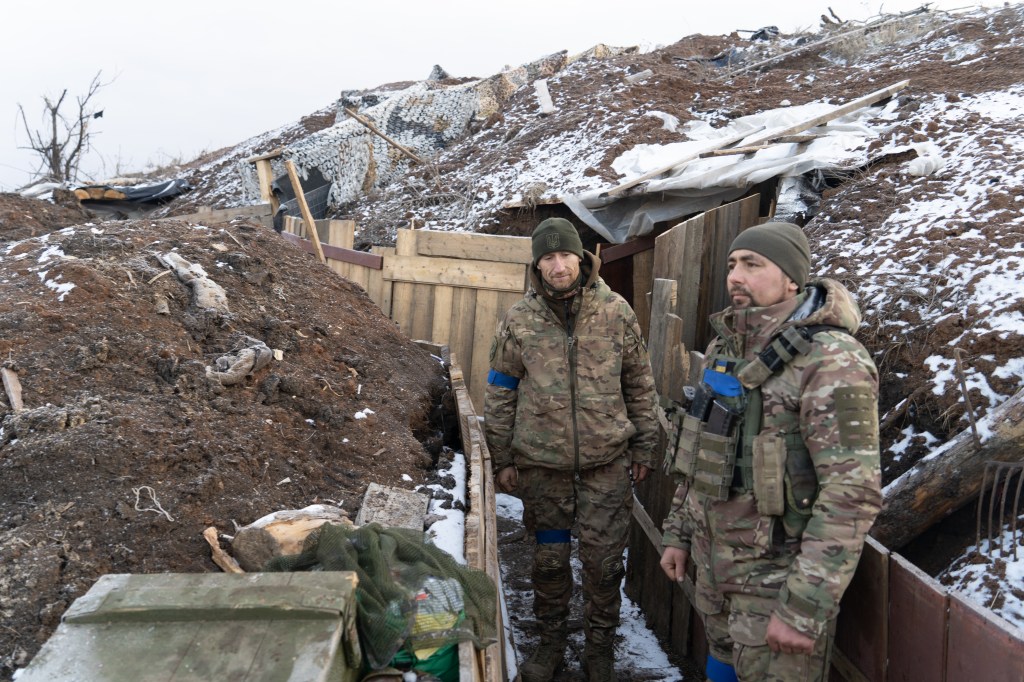
“It’s unclear if they’re gathering assault groups,” Zhenya said of the unwelcome visitors, “but it is an unusual number of people.”
The defenders were frustrated, Zhenya continued, forced to rely on the BMP’s 30mm autocannon to ward off the threat. Mortars or artillery would have been more suitable, but such ammunition is currently in short supply and may remain so for the foreseeable future. As the second anniversary of Russia’s invasion of Ukraine approaches on Saturday, the mood among Zhenya and others serving in the 28th Mechanized Brigade in the Bakhmut region is somber. While some U.S. lawmakers are digging in their heels on sending additional aid to Ukraine’s beleaguered defense forces, troops The Dispatch spoke to in the Donbas region over the past week are pleading for more help.
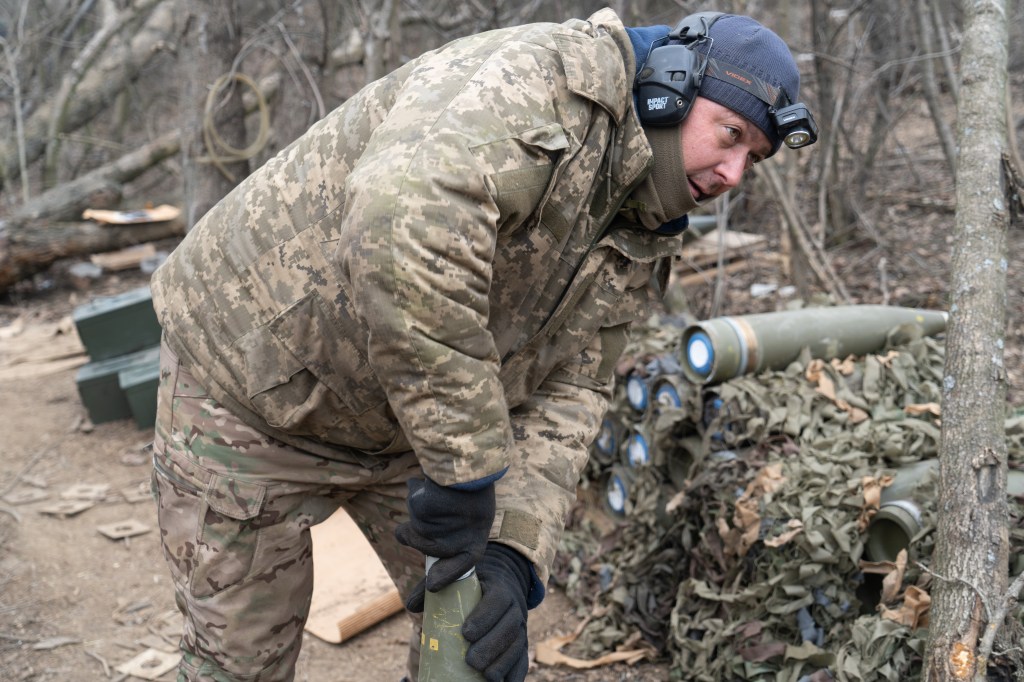
“I don’t know why people think in America that their lives will become better if they stop aiding Ukraine,” said Zhenya, estimating that the typical American taxpayer would probably contribute roughly the equivalent of two beers per month to the war effort should aid resume. “But then the reasons why you drink beer would not be as happy,” he added, speculating what would happen if aid dries up for good. “American soldiers might die in some other wars because of that, because this is like a domino effect.”
From his command post about a mile away from the zero line, company commander Captain Marine, whose callsign is a reference to his original service branch before transferring to the Ground Forces, coordinated the defense while sitting in his dugout’s desk chair. He relies on Discord—an instant messaging and voice-over-internet platform predominately used by video game players—to speak with his officers while sending them live drone footage of the enemy.
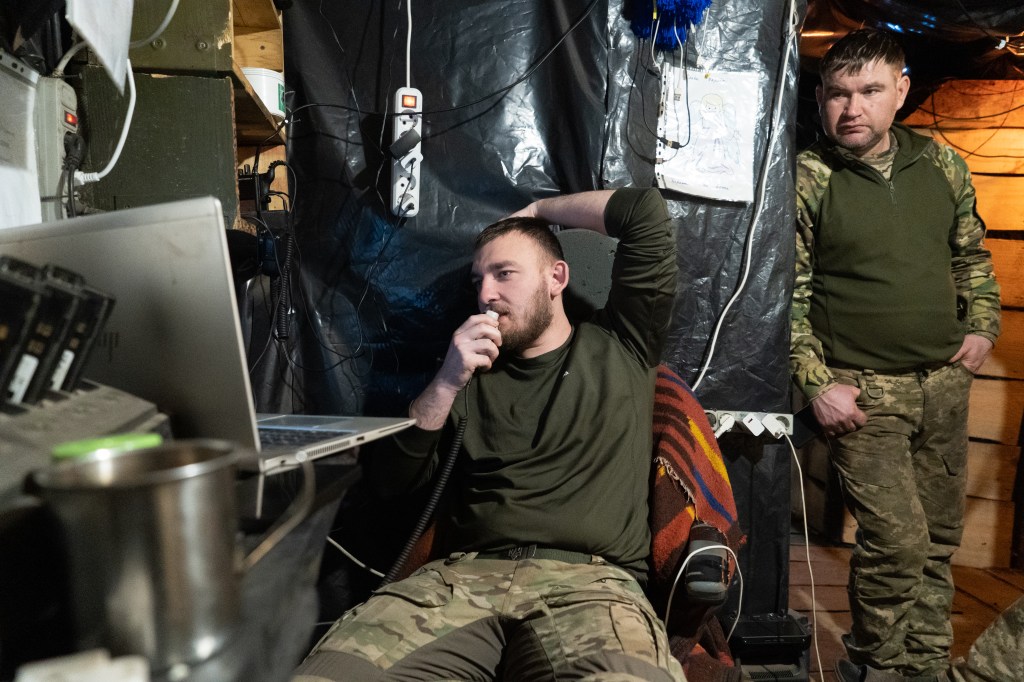
Marine said he has never been more pessimistic, even compared to the war’s early days.
“People back then were more motivated and most of the country didn’t know what real war is, and now we have so many casualties,” he said, adding that more weapons are desperately needed to defeat Russia. “We won’t win the war with just people, we have much fewer people than they have.”
Farther away from the zero line, at an artillery position around 10 miles from the front, Senior Lieutenant Yasen said he now has less than half the number of shells available to him last summer. His M109 self-propelled howitzer, which the U.S. gave to Ukraine, fires the 155mm NATO standard round that has emerged as the lifeblood of Ukraine’s defense. In the absence of new aid, Yasen’s men use shells donated from other, ostensibly neutral, nations.
The armament shortage creates more work for the artillery team, who must use their thin supply to compensate for mortar teams closer to the front who are even more poorly equipped. But their artillery fire is less accurate than it should be because the barrels on their cannons are in dire need of replacement themselves, having fired several times the recommended maximum number of rounds.
“The people of the United States and the government of the United States promised one thing,” said Yasen. “And the world heard what the Americans said—that they would support us as long as we need, as much as we need—but in the end what we are seeing is the United States ruining its own image.”
For Yasen, as well as for every other soldier who spoke to The Dispatch, nothing short of full repulsion of Russia’s invasion is acceptable. “If we stop, that doesn’t mean that they will stop,” he said. “And they won’t stop until they destroy Ukraine.”
‘Dignity and freedom.’
Even though the battlefield outlook is bleak, a rare bright spot is the abundance of cheap kamikaze drones. Known as FPVs (first-person view), the drones only cost a few hundred dollars apiece. And because the drones themselves are not considered weapons (they were invented for the new sport of drone racing), philanthropists in the U.S. and Europe can buy the FPVs in bulk relatively easily and ship them to Ukraine. Once on the battlefield, operators strap a bomb onto the drones and fly them into enemy positions.
Last week, The Dispatch accompanied a team of FPV operators from the 28th Mechanized Brigade on a mission in the countryside near Bakhmut.
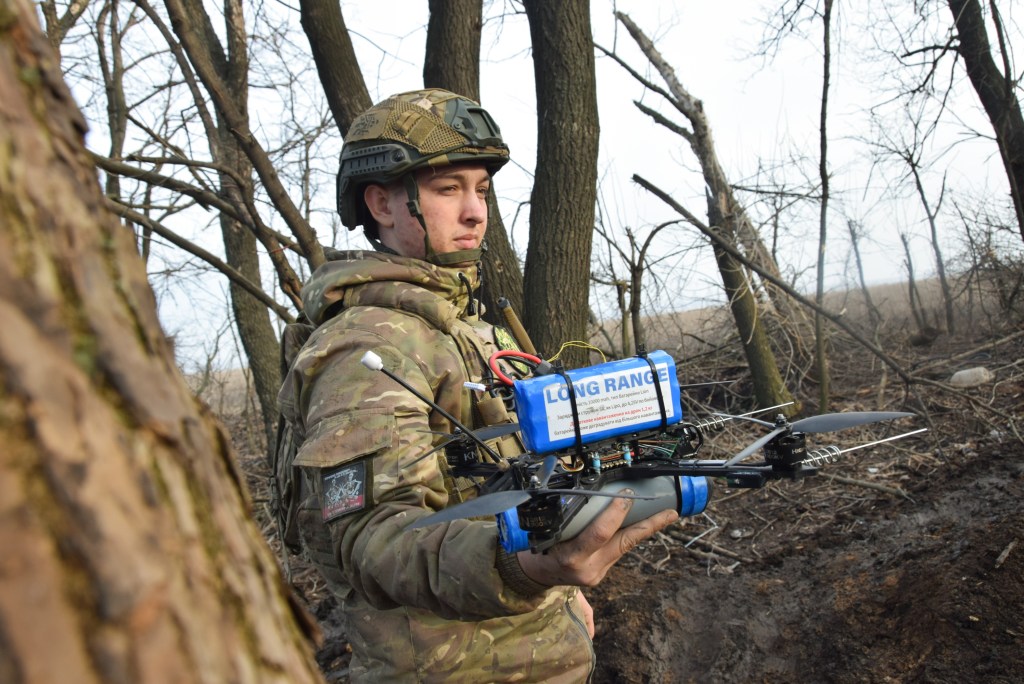
In an aging six-wheel drive Soviet-made truck, the team left for their outpost under the cover of darkness. Their commute from Kostyantynivka, the last Ukrainian-held city on the road to Bakhmut with a semblance of normality, proved arduous.
A sudden snowmelt had brought on an early bout of bezdorizhzhia—literally meaning “roadlessness”—and an especially thick and sticky layer of mud. Weighed down with soldiers and their gear in the back, the truck was unable to clear the final incline on the road to the outpost, forcing the men to walk the last several hundred meters on foot through an almost impassable sludge as the rising sun threatened to expose them. Once in position about a mile away from the enemy, the three-man team settled into their dugout awaiting orders.
“Our intelligence is working now and we are waiting for them to give us a target that we need to hit,” explained Junior Sergeant Soldatik, a 26-year-old FPV pilot from Volyn Oblast whose callsign means “toy tin soldier.” “So now we are just sitting and waiting.”
After a couple hours of waiting, they received orders to hit a Russian mortar team that had been dueling with a Ukrainian mortar team. Soldatik excitedly went to work plotting a course on his tablet, using a Ukrainian-designed map app for planning fire control.
“There it is, look, I’m going to f--- up this trophy,” said Soldatik, pointing to the location of the mortar on the map. “The target is good, the landmarks are cool and easy to find.”
The team ascended to the surface, where they armed a small bombshell and attached it to the FPV. Soldatik strapped on his virtual reality headset and went to work piloting the drone. But when the FPV arrived at the site 6 miles away, he realized it would have to descend behind a hill—out of line-of-sight with Soldatik and unable to receive further course corrections.
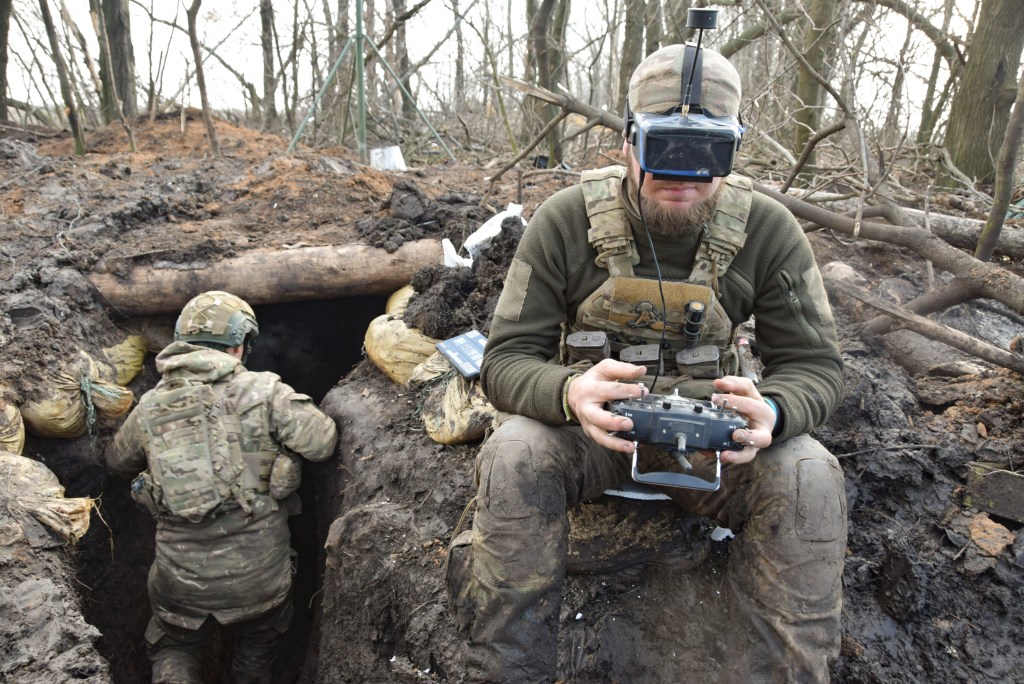
“That was trash,” said Soldatik after the operation, which ended with the FPV missing its target and blowing up for nothing. He would ultimately use up four FPVs that day, with none completing their objectives. Such are the drawbacks to relying on unconventional, improvised weaponry on the battlefield. Between targets that are difficult to reach and enemy electronic countermeasures, Soldatik said his luck varies wildly from day to day.
And, unlike traditional artillery, in addition to their vulnerability to countermeasures and their need for line-of-site with the pilot, FPVs do not function in the rain. Operations after dark are also prohibitively expensive in most circumstances, given the high cost of night vision cameras.
Still, the soldiers said the new tech was partially filling the gap in capabilities caused by shell hunger—and keeping enemy tanks in their sector at bay. “Artillery needs 10 shots to destroy an automobile, while we only need one,” said a 23-year-old member of the team from Mykolaiv with the callsign Bart. “Before we started working here, Russians used tanks and BMPs very close to our infantry, and now they’re scared.”
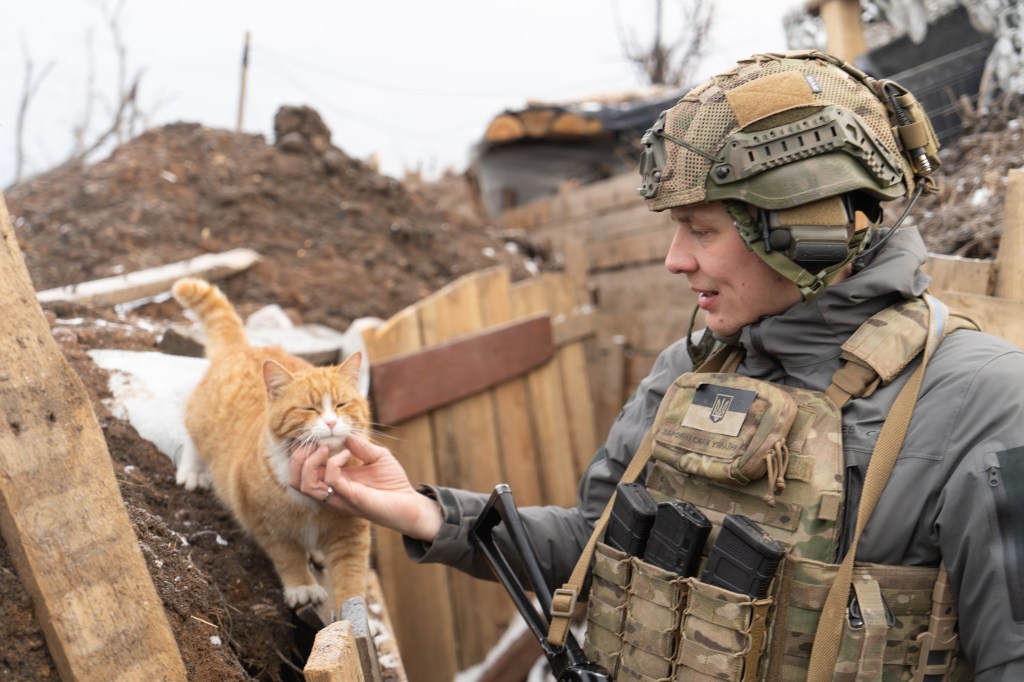
While Ukrainian soldiers make the most of their circumstances, all who spoke to The Dispatch agreed that they would not win without continued foreign backing. The loss of U.S. support would likely be especially devastating if European allies fail to meet their artillery shell production targets.
But while hope for victory is currently at a low point in the trenches, a common refrain among soldiers and civilians alike is that Russia is slowly committing suicide through endless escalations. “The collapse of the Russian Federation is inevitable,” said Sergeant Producer, whom The Dispatch first met in the fall. Russia “shot itself in the head” in 2022 when it chose to invade Ukraine, he added. “Right now, what we are observing is the fall of the Russian Empire founded by Peter the Great.”
Producer, who works in the 28th Mechanized Brigade’s press service, is a seasoned war correspondent who got his start reporting on the 1992 Transnistria War in Moldova. He went on to cover wars in the Balkans, Sierra Leone, Afghanistan, and elsewhere before joining the Ukrainian armed forces three days after Russia invaded.
While he’s confident that Russia is eventually doomed to implode, Ukraine may not live to see that day. “Russia has the resources to conquer Ukraine, but it will be impossible for them to hold it all together and control it,” he said. “The reason they won’t be able to fully control Ukraine is because Ukrainians have such a mentality that, for us, dignity and freedom is more important than life.”
‘Hope without hope.’
Hundreds of miles away from the frontline, the war often feels distant in the nation’s capital. During the day, shops and restaurants—including major American fast food chains—have long since reopened after Russian forces withdrew from Kyiv Oblast almost two years ago. The beer taps flow liberally at the bars in Podil—a trendy, historic neighborhood near the Dnipro River—while the National Opera in the city center hosts regular ballets and concerts. A trickle of adventurous tourists even stay in the city’s numerous upscale hotels.
But starting at midnight, a curfew shuts the city down. The dark, early morning is Russia’s favorite window to launch missiles and Iranian-built Shaheed kamikaze drones at the capital. While American-supplied Patriot surface-to-air missiles manage to shoot down most of the threats, the debris produced by such interceptions is itself a deadly menace. Russia has struck Kyiv on three separate nights in the past month, leaving four dead on February 7.
With Ukraine’s Patriot missile supply reportedly running low as U.S. aid remains suspended, Kyiv could face a repeat of the carnage experienced during the winter of 2022-23. With critical infrastructure under constant attack, the mayor later said that he had been on the verge of ordering a full evacuation.
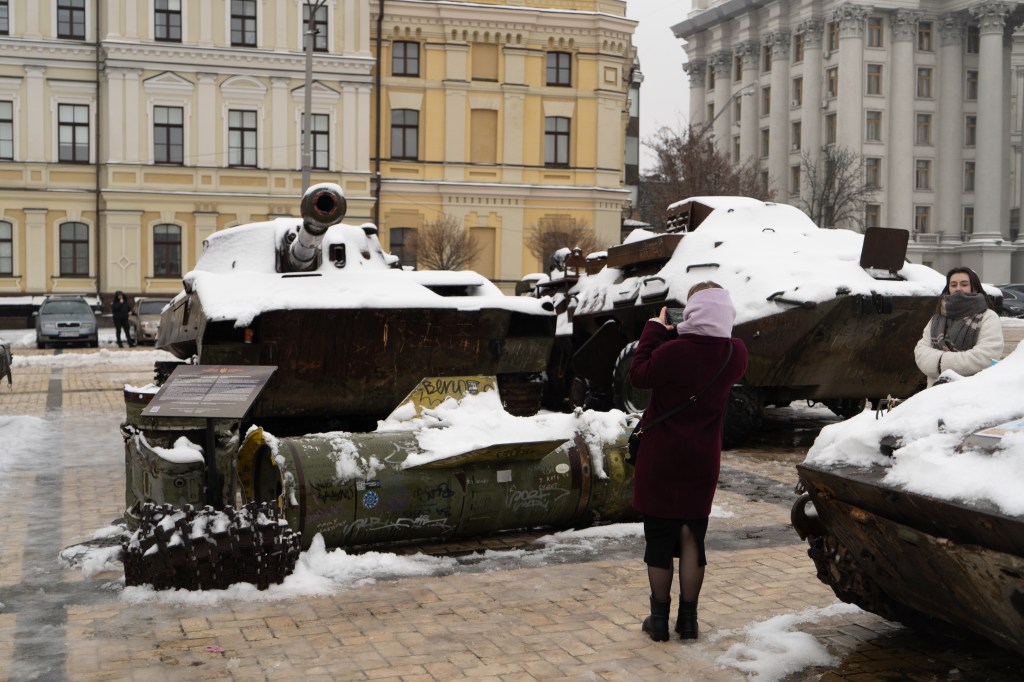
Inside his chicly decorated office at the aWARe Zone Youth Hub for young displaced Ukrainians in Podil, Oleksandr Reshetkov, the hub’s founder, said that the psychological comfort provided by Kyiv’s robust air defense is starting to fray.
“People feel at least [somewhat] safe because they understand we have Patriots,” he said, though he added that U.S. reluctance to supply more has begun to sow alarm. “People are starting to get worried about that, because if Russia will send more rockets, they can destroy more critical infrastructure and houses, and that level of fear is getting higher and higher—and of course Russia will use that.”
Reshetkov said he is especially dismayed that members of the Republican Party have become so reluctant to send more aid to Ukraine. His nonprofit, the Ukrainian Centre for International Relations, which is the parent organization of aWARe Zone, was initially funded with money from USAID during the Trump administration. He counts Brock Bierman, the former Trump-appointed USAID assistant administrator for Europe and Eurasia, as a friend and mentor.
Reshetkov is also well acquainted with Republicans through his work as vice president of Solidarna Molodz, the youth wing of former Ukrainian President Petro Poroshenko’s center-right political party. Solidarna Molodz is a member organization of the International Young Democrat Union (IYDU), a global alliance of conservative youth organizations that includes College Republicans and the Young Republican National Federation.
Since the start of the full-scale invasion, Reshetkov said his interactions with different Republicans have been both “super positive and super negative.”
Some, such as Bierman, who founded the D.C.-based aid organization Ukraine Focus, have doubled down on their support for Ukraine. But when Reshetkov leaned on his global conservative IYDU network to solicit aid, he found that some of his American friends who had previously been willing to support Ukrainian causes had suddenly gone cold on him.
“We realized that some people in the Republican Party are not that supportive,” he said. “Sometimes you even see some pro-Russian narratives.”
In a city with a street named after Ronald Reagan, disbelief in contemporary Republican Party politics is common among young Kyivites who vividly recall the late Sen. John McCain visiting protesters at the Euromaidan demonstrations in the leadup to what is known as the Revolution of Dignity, which ousted pro-Russia President Victor Yanukovych in February 2014.
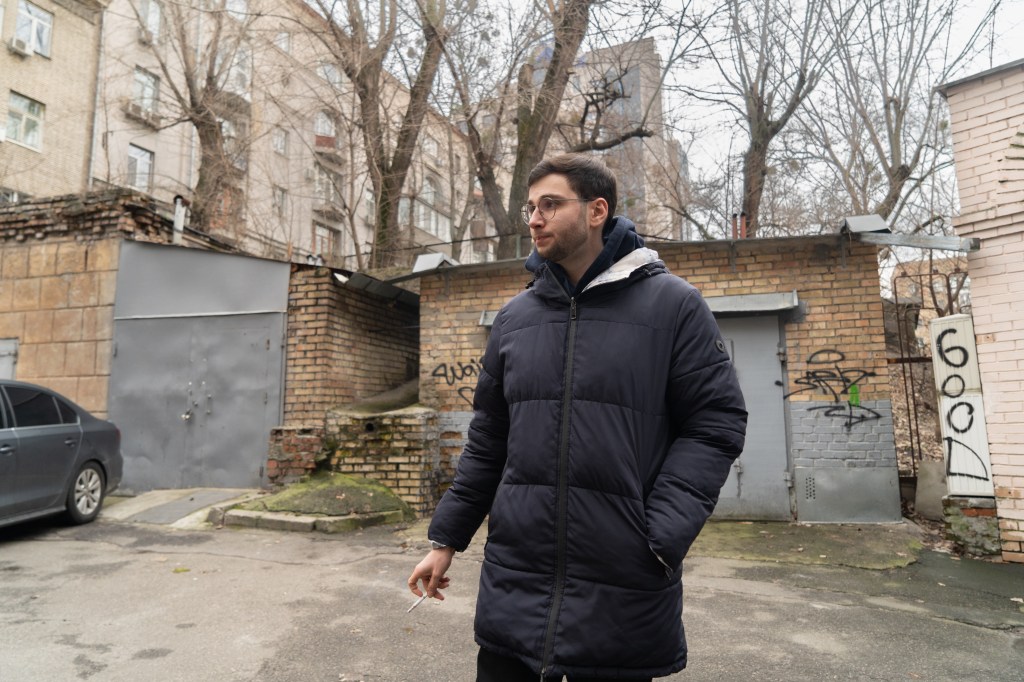
Arthur Kharytonov, the 28-year-old president of the Liberal Democratic League of Ukraine, a civil society group that promotes the development of liberal democracy in Ukraine, said over coffee and salad at a newly renovated bar in the city center that he implores Americans to understand that for Ukrainians, the war transcends politics.
“It’s always important to remind the American Congress that this is not a discussion between them and Zelensky or the office of the president,” said Kharytonov, who has spent the past two years fervently encouraging affiliate organizations in the International Federation of Liberal Youth to support his country’s defense. “It’s a discussion between them and the Ukrainian people—the requests are coming from all Ukrainians.”
When asked if he was hopeful, Kharytonov referenced the poem “Contra Spem Spero”—or “Without Hope I Hope”—by the famous Ukrainian poet Lesya Ukrainka.
“I hope without hope, somehow, that we can secure happiness in the future,” said Kharytonov. “That is why the U.S. support is so crucial, because you Americans give us hope to live in happiness, and without this support, the future is very dark.”
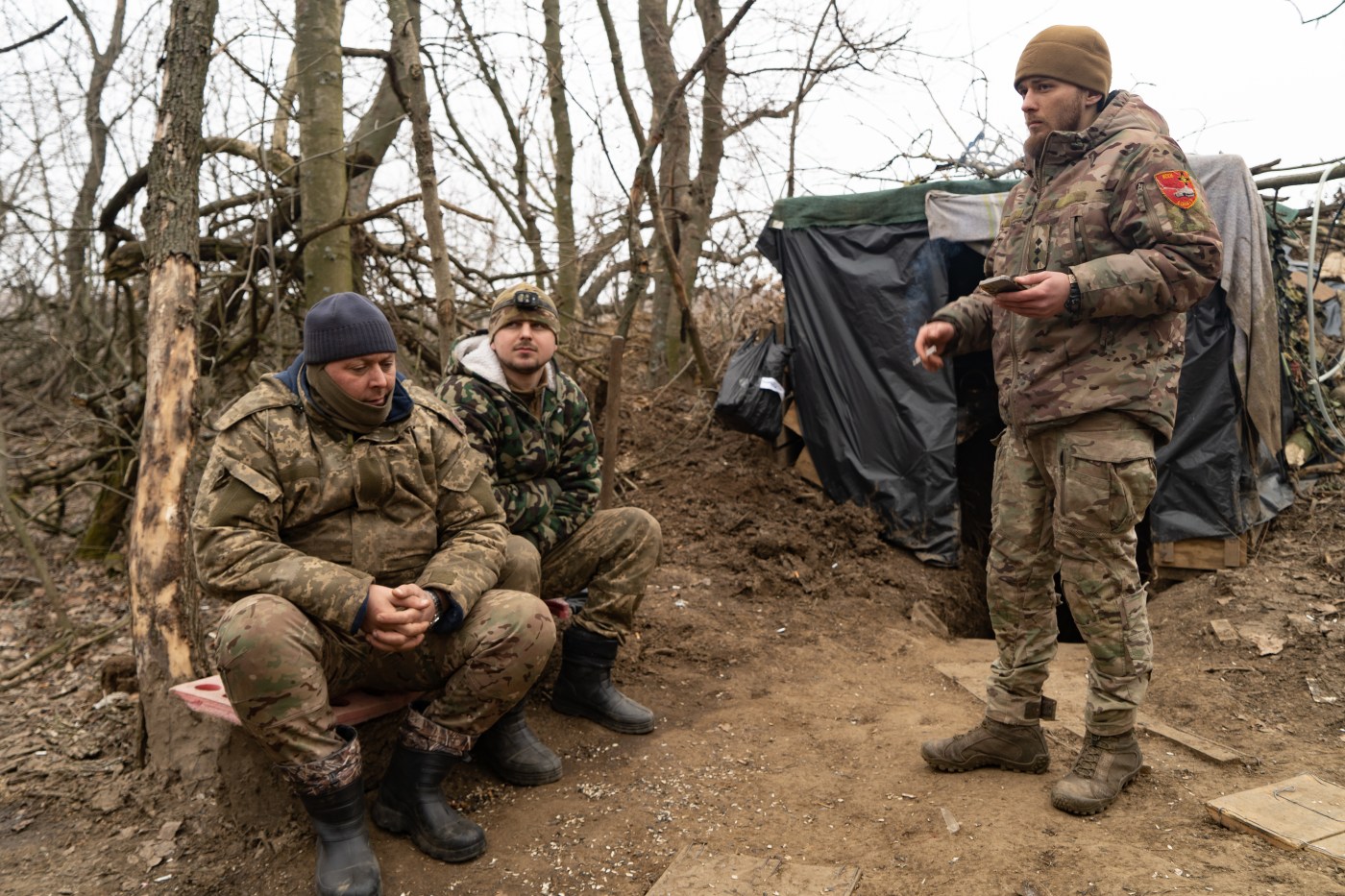

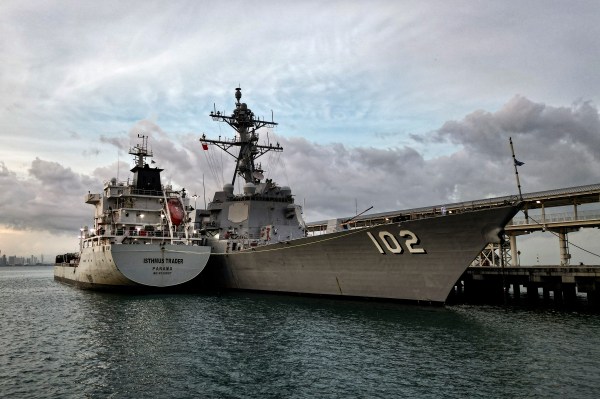

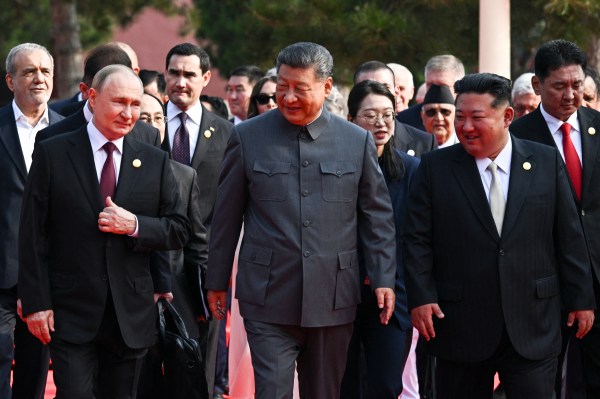
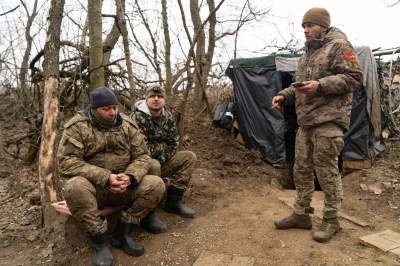
Please note that we at The Dispatch hold ourselves, our work, and our commenters to a higher standard than other places on the internet. We welcome comments that foster genuine debate or discussion—including comments critical of us or our work—but responses that include ad hominem attacks on fellow Dispatch members or are intended to stoke fear and anger may be moderated.
With your membership, you only have the ability to comment on The Morning Dispatch articles. Consider upgrading to join the conversation everywhere.